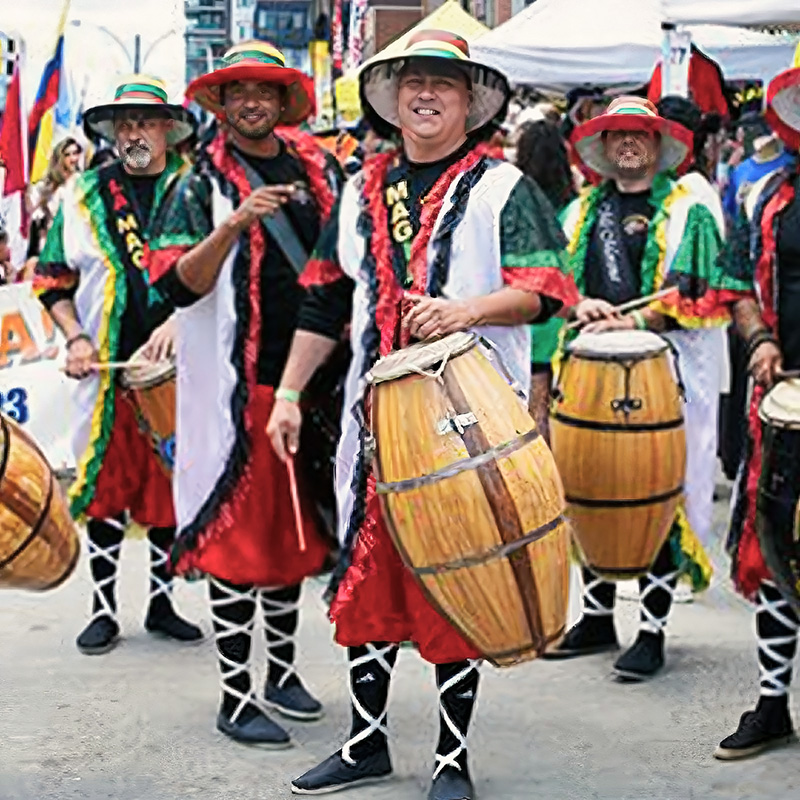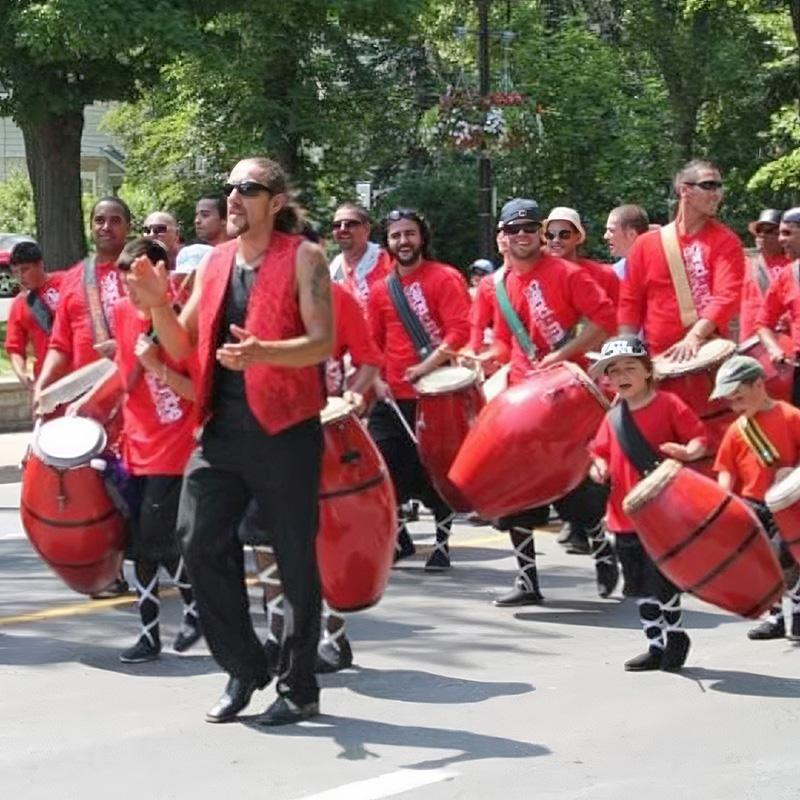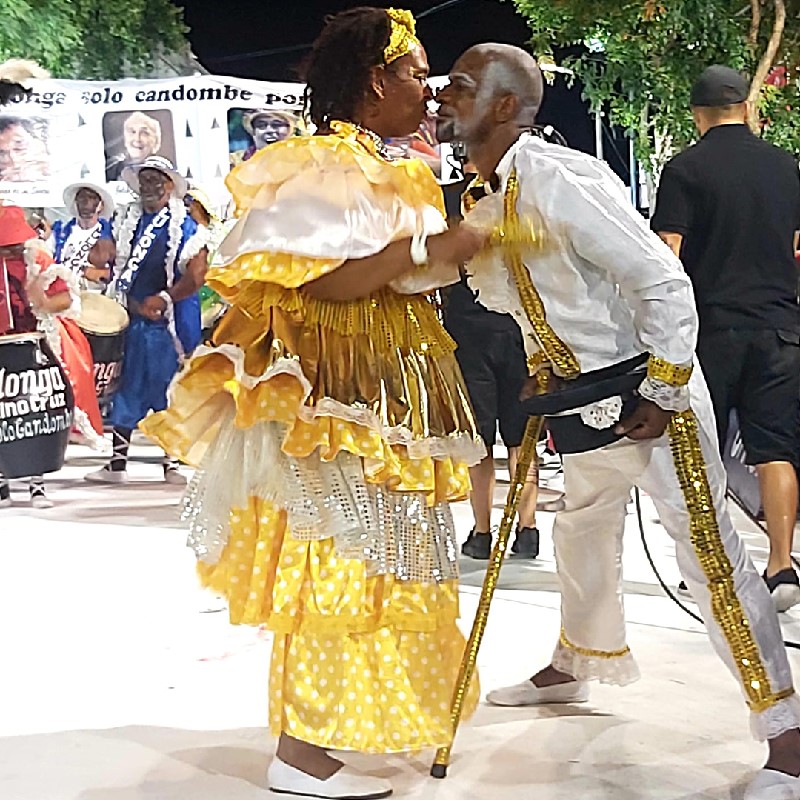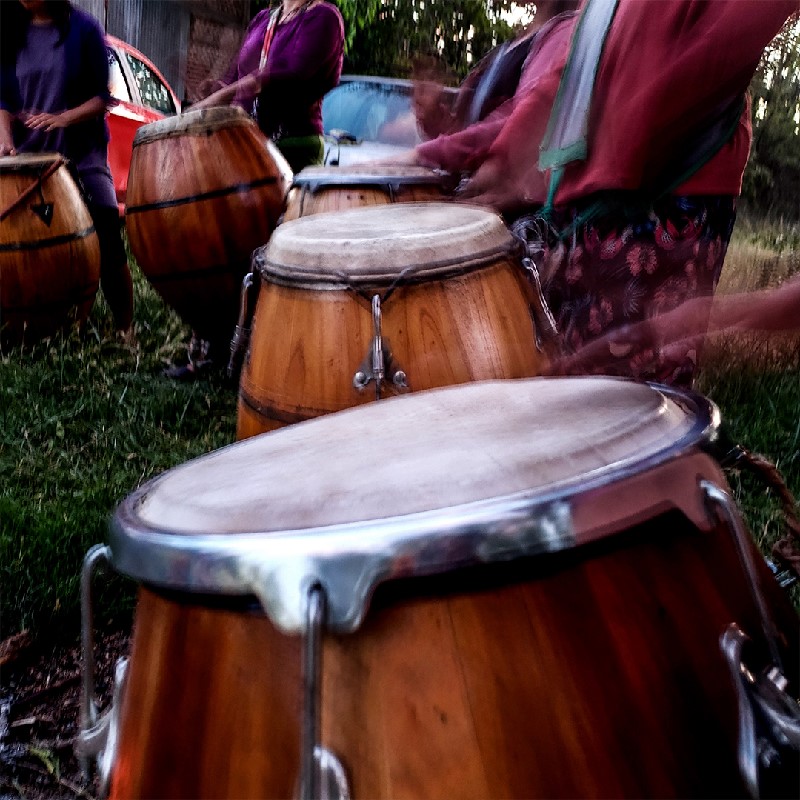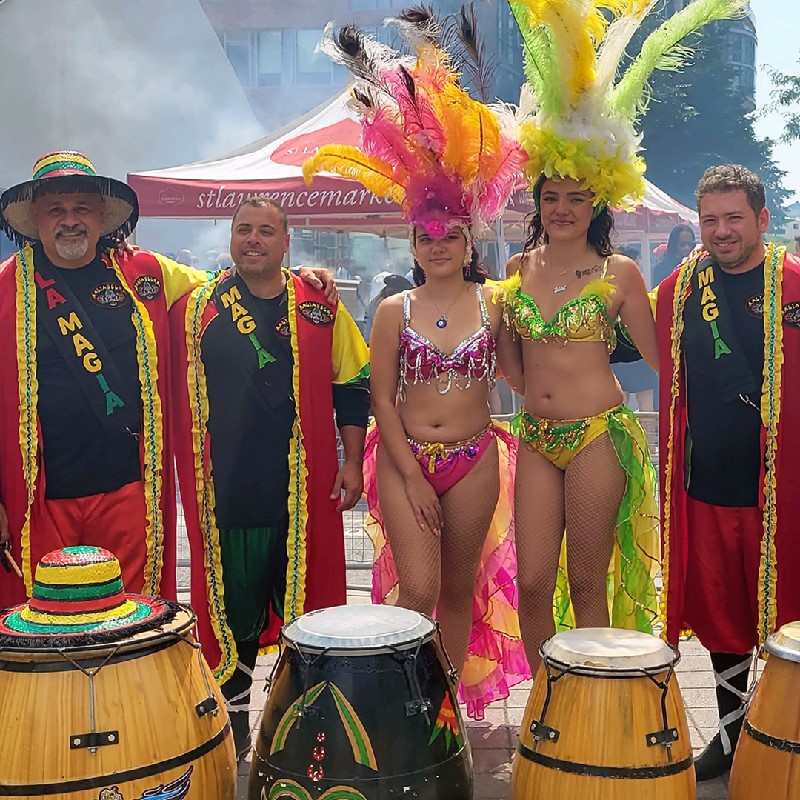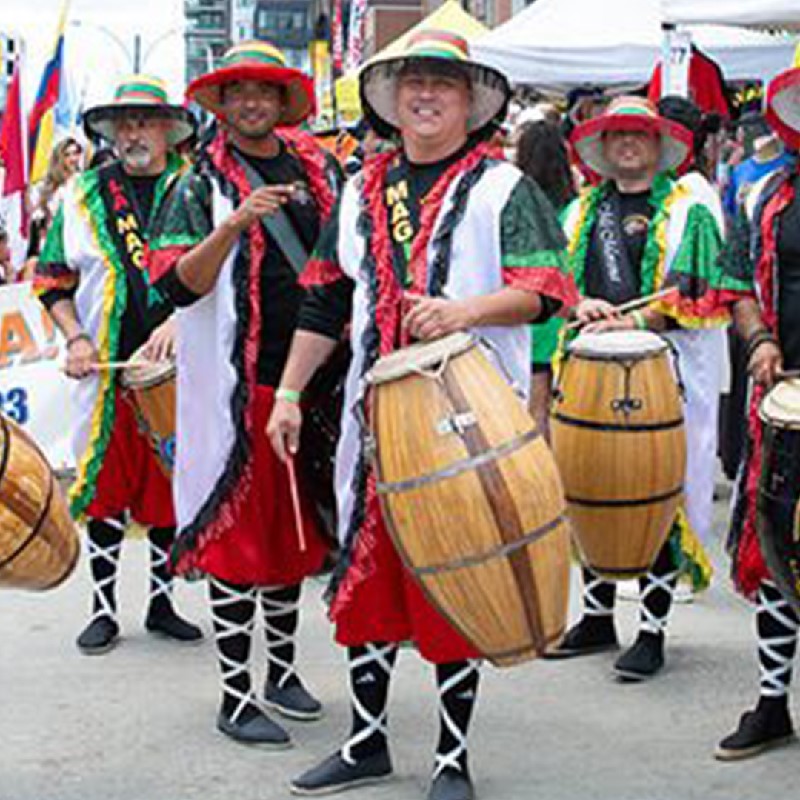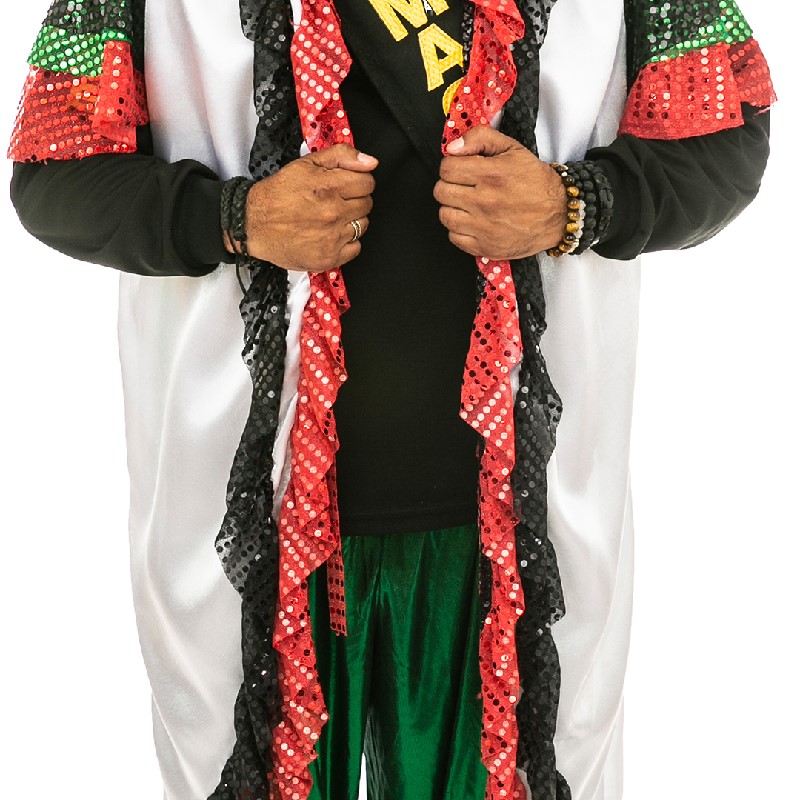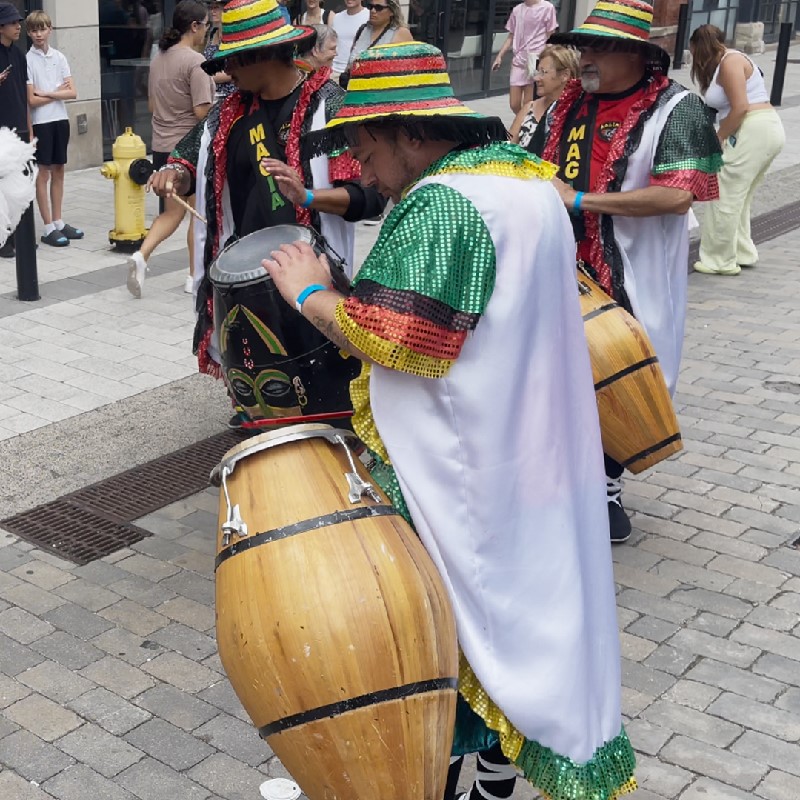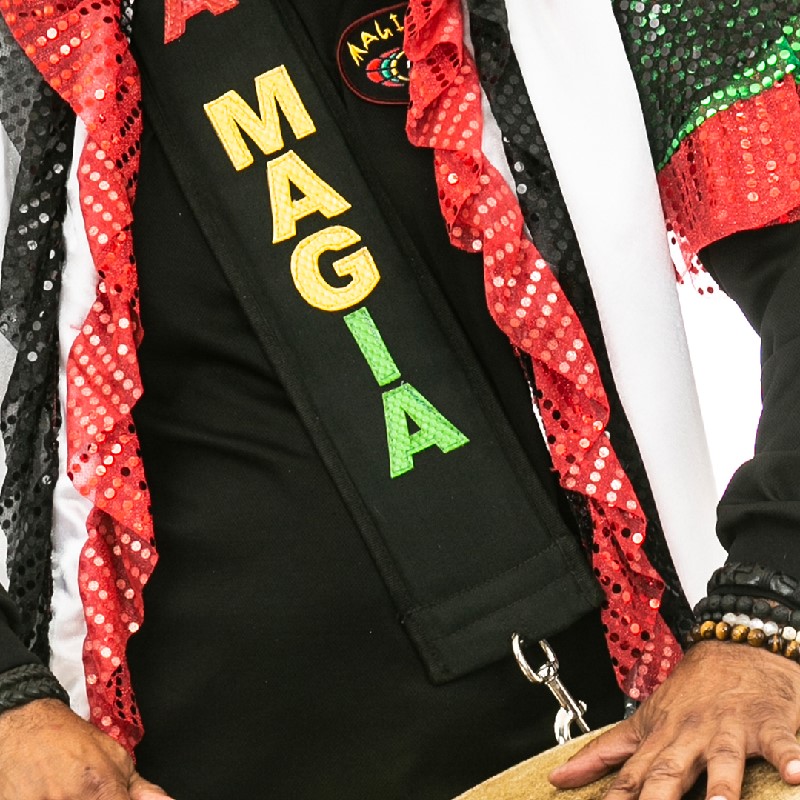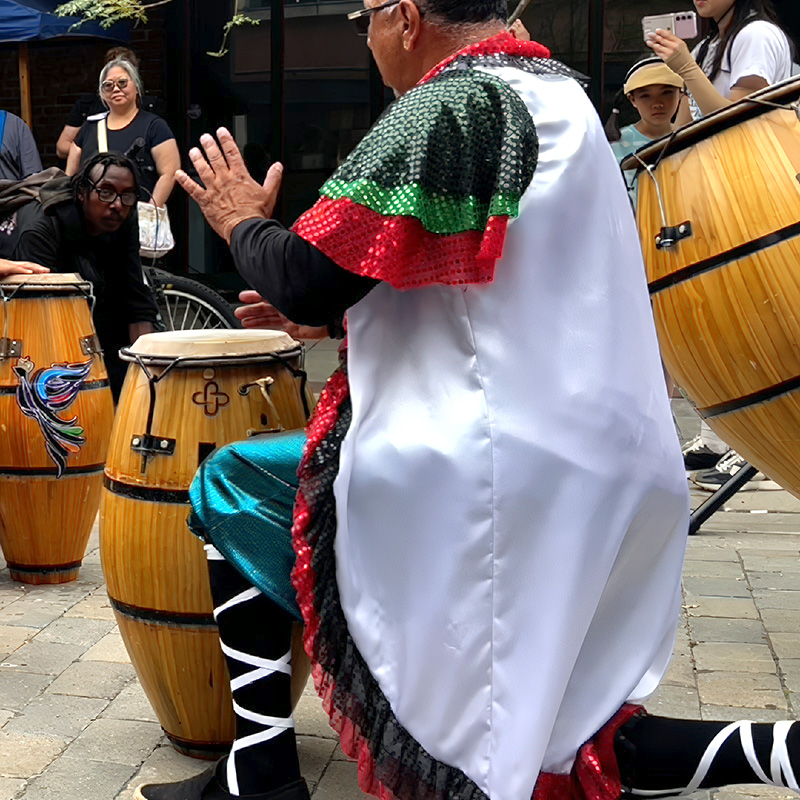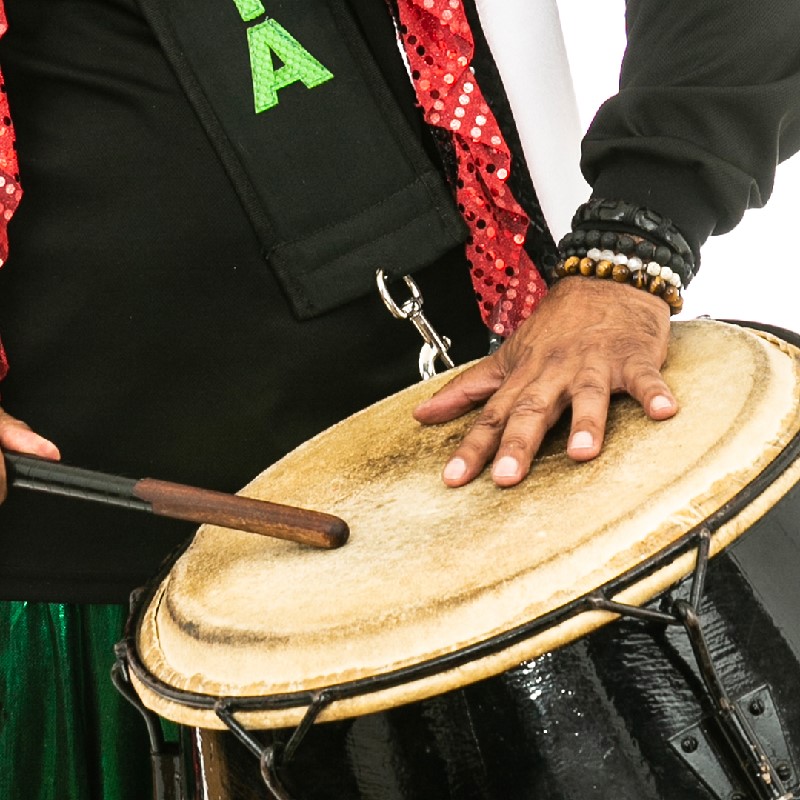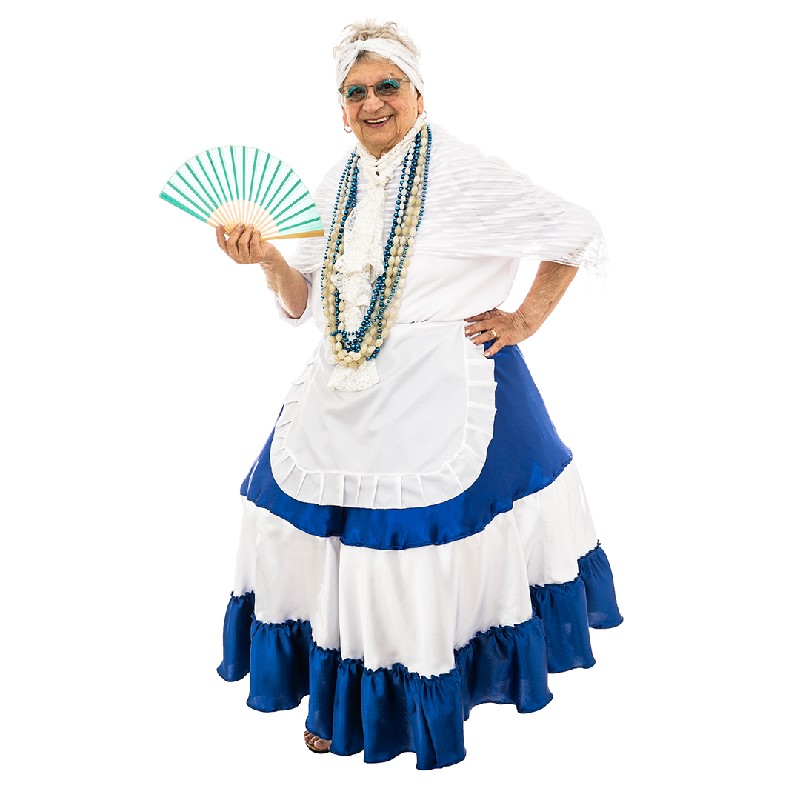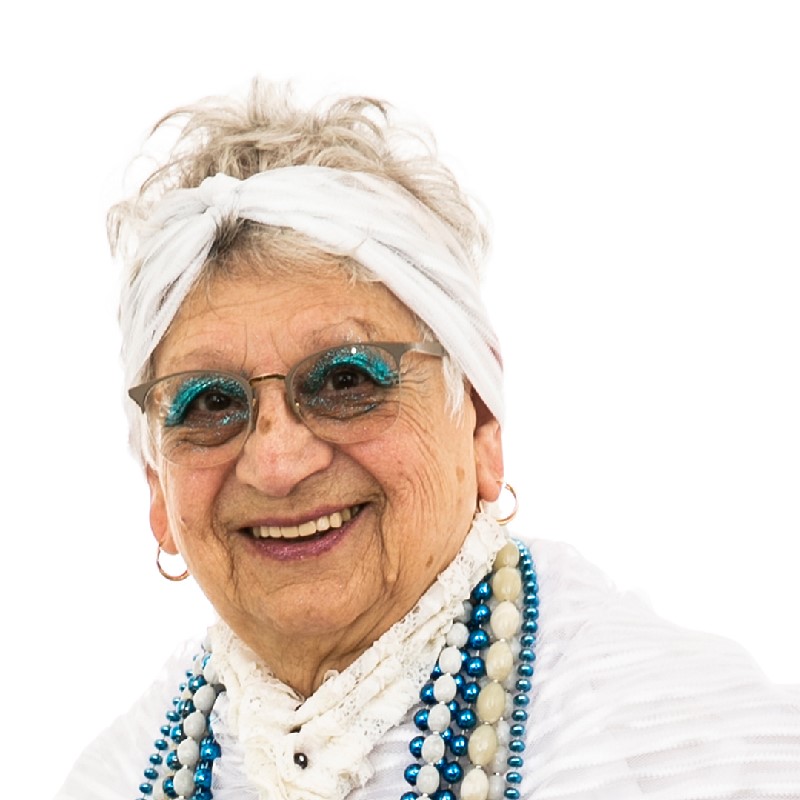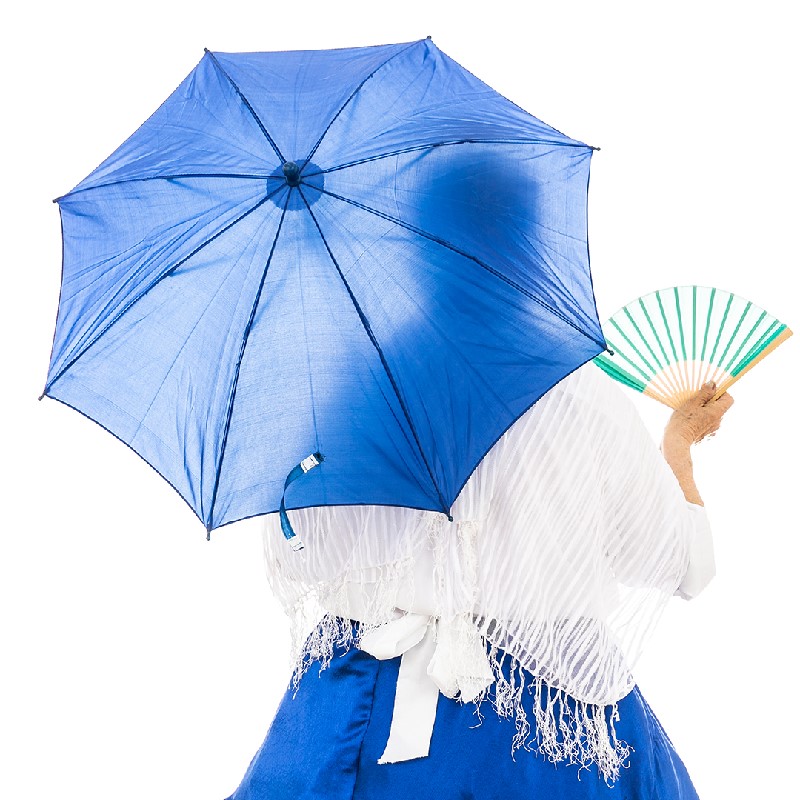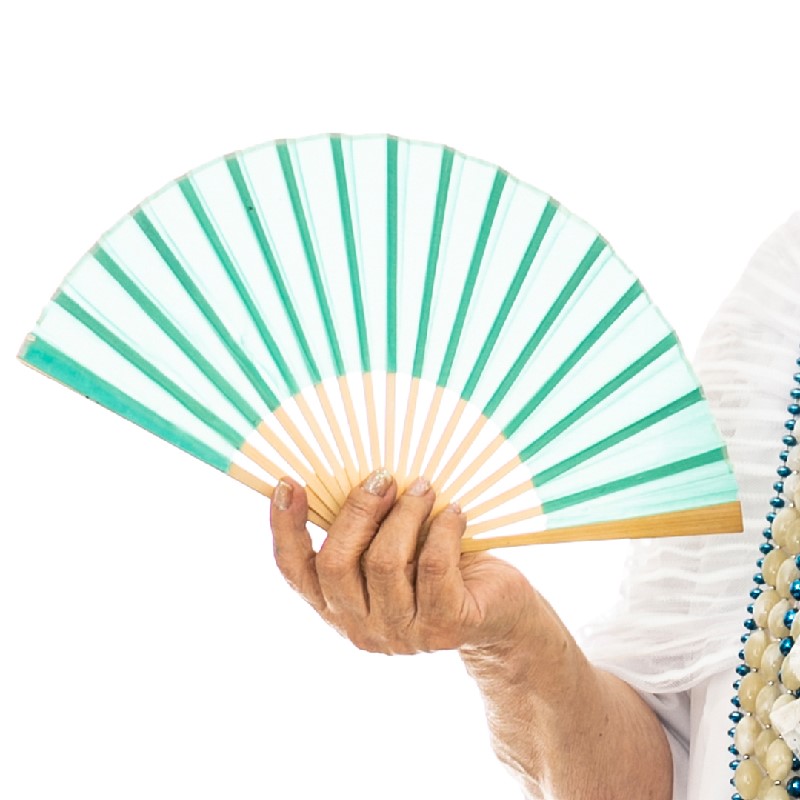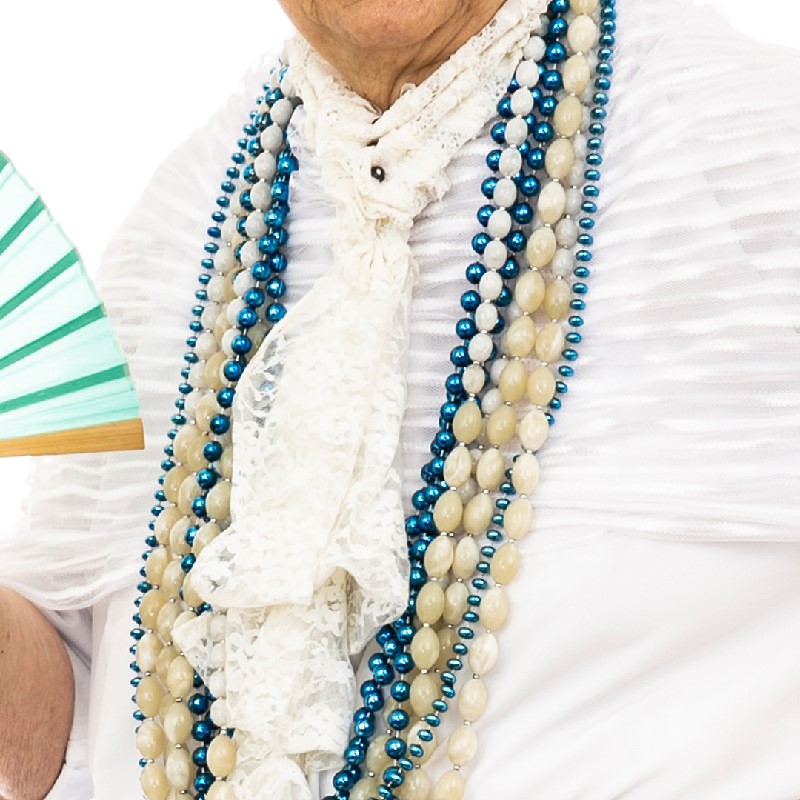Introduction Introducción l'introduction
Candombe (“pertaining to blacks”, in Kikongo, a Bantu language) stands as a vital expression of Afro-Uruguayan identity. Despite being historically oppressed, it now holds UNESCO's distinction as an Intangible Cultural Heritage of Humanity. In the 1970s, Uruguayans who came to Canada transported its captivating rhythms and dances along with the distinctive attire of the Tamborilero (drummer) and Mama Vieja (old mother). As a result, the Uruguayan community has breathed new life into the heart of Candombe in their new home. El Candombe (“de los negros” en el idioma kikongo) es un fenómeno fundamental de la identidad afro-uruguaya. Aunque ha sufrido opresiones en el pasado, hoy es reconocido por la UNESCO como Patrimonio Cultural Inmaterial de la Humanidad. Los inmigrantes que llegaron a Canadá en los años 70 trajeron consigo sus hipnotizantes ritmos y bailes acompañados de coloridas prendas características, incluyendo las del Tamborilero y de la Mama Vieja. Así, la comunidad uruguaya ha recobrado la esencia del Candombe en su nuevo hogar. Le Candombe (« appartient aux noires » en kikongo, une langue bantoue) est un phénomène essentiel de l'identité afro-uruguayenne. Bien qu'il ait subi des oppressions dans le passé, il est aujourd'hui reconnu par l'UNESCO comme Patrimoine Culturel Immatériel de l'Humanité. Les immigrants qui sont arrivés dans les années 70 ont apporté leurs rythmes envoûtants et leurs danses accompagnées de vêtements colorés caractéristiques, incluant ceux du Tamborilero et de la Mama Vieja (Maman Vieille). Ainsi, la communauté uruguayenne a retrouvé l'essence du Candombe au Canada.
